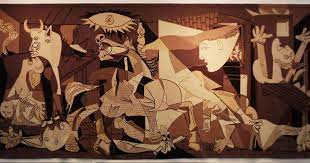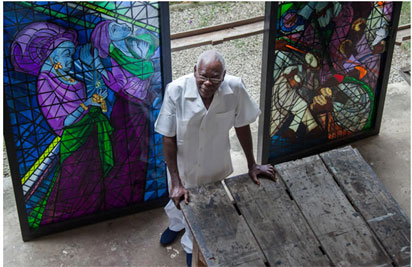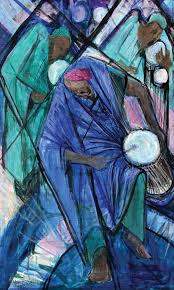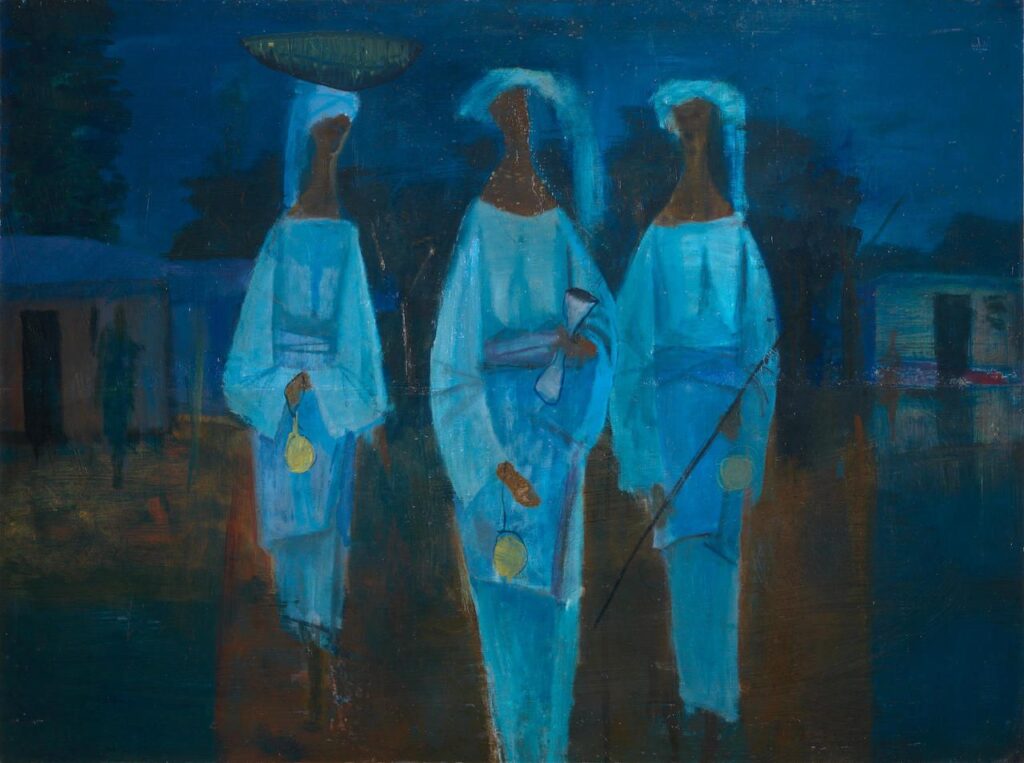Professor Yusuf Adebayo Cameron Grillo was a great Nigerian Artist and academic who made huge contributions to educational development. He presented many interesting papers and speeches in support of humanitarian causes. In 1999, he contributed an essay titled ‘Visual Art as a Weapon of Propaganda’ to the May Day exhibition catalog of a group of artists under an umbrella known as Creative Chambers in Lagos. Artists featured in the show are Dipo Kehinde, Akinola Olusegun, Abimbola Adenugba, Asukwo Etim Bassey, Victor Asowata, Oluwafemi Otoki, Titilayo Kolawole-Omoighe, Kingsley Chima Okoronkwo, Moses Agbedeyi, Balogun Adeola, Muraina Akeem Adekunle, Olusola Olumuyiwa, Adeyemo Hakeem Bolaji, Mufu Onifade, Francis Asowata, Odunayo Akindiya, Biodun Ladipo, Chinedu Agbodike, Aladegbongbe Ademorin, Ridwan Osinowo, Kazeem Adeleke, Erapi Gabriel, Ibrahim Abiodun, and Abimbola Osajare.
Here is the 1999 presentation of Prof Grillo who died in Lagos yesterday:
Visual Art as a Weapon of Propaganda
Not wanting to open a controversy, I had originally thought that I would limit the scope of my message on this occasion to one of exhortation to the young, talented, selfless artists who reside in the “Creative Chambers”. I, however, could not resist touching on the controversial question of the effectiveness of Visual Art as a weapon of propaganda, for obvious reasons.
The phenomenon of groups of visual artists coming together under one appellation or another, for one cause or another is becoming a fast-growing one in the Country.
By nature, the visual artist painter or sculptor is a “lone ranger”. This cannot but be so since his vision and the interpretation thereof are essentially personal; you might say that he resides in a world, all his own, sometimes appreciated by others but at most times misunderstood.
He is not deterred by the ‘ignorant lot who do not understand him. He continues, on his lonely track, searching for the ever-elusive truth HIMSELF.
Various circumstances have through the ages brought groups of visual artists together.
The most usual is the “Master Syndrome”. Disciples of a strong master have often been known to keep together at least for some time, Uche Okeke and Solomon Wangboje, etc, are good examples of such masters. By extension, students from the same art school during a particular period also show this tendency.
Intellectualism, philosophy, and a few cases spiritual ideologies have also been responsible for the birth of some groups. The impressionists the ‘Cubists and the Surrealists are a few of such groups.
The ‘Creative Chambers’, however, has its own roots in external altruistic motives like their support for Human Rights, identifying with the poor struggling masses, help for the needy, and other humanistic charitable ideals. These are very commendable reasons which call for active support from us all.
BUT how effective a tool is visual art in the campaign for the promotion of these aims?

Sometime in the late sixties, there was an American Organisation in the country; its name was the American Society of African Culture (AMSAC). It was a very active Society that sponsored exhibitions, drama, cultural displays, lectures, and such events. The society sponsored a debate on one occasion on the subject “Art A Very Effective Form of Propaganda”. A black American painter was in the country at the time, and he took part in the debate; he held the view that Art was one of the most effective weapons for fighting a cause. To this end, he rolled out a long catalog of classical and contemporary paintings on the horrors of war, evils of apartheid, and colour segregation in America.
Other speakers for the motion made similar points drawing attention to many illustrations in books, cartoons, etc.
I chose the unlikely position to oppose the motion and with my own supporters, we did not have difficulty in showing the large audience that, as important and powerful as a painting like Picasso’s Guernica is, its success as a statement to deter wars or violence is severely limited. Only a handful of those present had ever heard of this great painting; fewer still had ever seen a reproduction – let’s not talk of the original of this great work.

The story was different when names like Martin Luther King, Mandela, and Stokely Carmichael were mentioned. The whole hall roared with applause. Evidently, compared with the spoken or written word, particularly with the formidable force of the Radio, Television, or the Press behind it, visual art is a rather weak weapon. Very few people ever get to see artworks. Very, very, few understand what they see and very precious few get the profound message which the artist is putting across. Be this as it may, one must not underestimate how much extra punch the arts can and do give to propaganda messages. The spoken word assumes classical heights when delivered artistically in poetic oratory. The printed word laced with eloquent illustrations or Cartoons makes a much more touching and lasting impression. We learn so much, more easily through lyrics of songs and satirical cartoons sting much more deadly than volumes of criticism-essays.
The most obvious contributions of the “Creative Chambers” to the Human Rights struggle will continue to be by way of collaborating with other organizations with identical goals, injecting music into the spoken words, beauty into the printed words, and splendor to the events.
The ‘AKA’ group of artists has been very active for over a decade. The group has well-known names like Obiora Udechukwu and other young artists who studied or practice in the eastern part of the country in its fold.
There is no formal philosophy or objective behind its formation other than the need for like minds to keep together and act as mutual sources of encouragement to one another. Soon after, the death of Prof. Wangboje, some of his ex-students also inaugurated a group that held an exhibition in Lagos in 1998. There are some other groups with different parts of the country as launching pads. These groups deserve the support and encouragement of all art lovers. It is hoped that the various groups will find a common forum in the National Society of Nigerian Artists which deserves to be a very strong voice to champion the cause of visual artists nationally and internationally.










